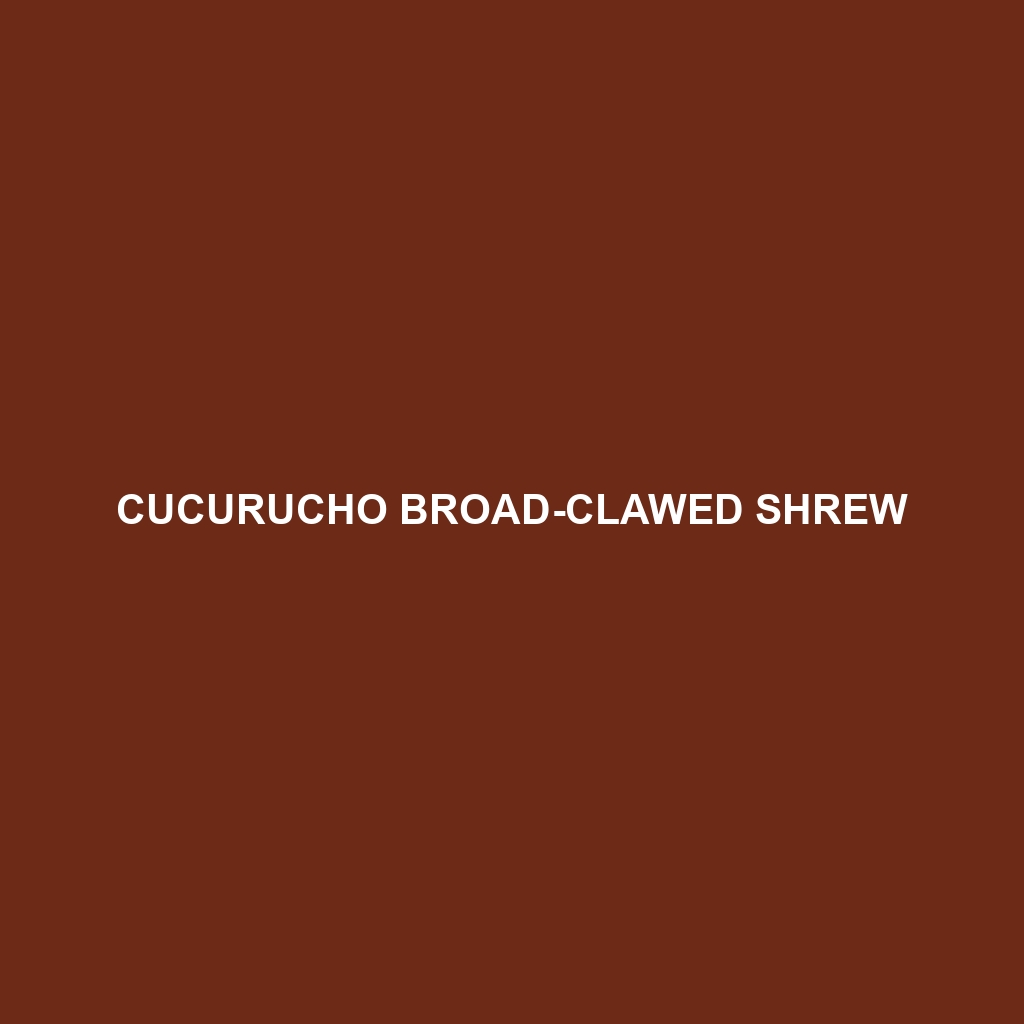Cucurucho Broad-clawed Shrew
Common Name: Cucurucho Broad-clawed Shrew
Scientific Name: Sorex cucurucho
Habitat
The Cucurucho Broad-clawed Shrew is primarily found in the lush temperate forests of the Andes Mountains, particularly in regions of Ecuador and Colombia. This species thrives in moist, mountainous environments, often seeking refuge in dense underbrush and leaf litter. They are adapted to high-altitude habitats where humidity levels are high and temperatures are moderate, making these ecosystems their preferred dwelling.
Physical Characteristics
Measuring approximately 9 to 11 cm in length, the Cucurucho Broad-clawed Shrew exhibits a slim, elongated body typical of shrew species. Its fur is soft and dense, ranging from a rich brown hue to lighter gray, which aids in camouflage among the forest floor. A notable feature is its broad, clawed forelimbs that are adapted for digging and foraging in the soil, distinguishing this species from its relatives. Its pointed snout and small eyes contribute to its unique appearance.
Behavior
This shrew is primarily nocturnal, exhibiting high levels of activity during the night when it emerges to forage for food. Known for its curious and inquisitive nature, it often engages in burrowing behavior, creating intricate tunnel systems within its habitat. The Cucurucho Broad-clawed Shrew communicates through a series of high-pitched clicks and chirps, often using these sounds to warn others of potential threats.
Diet
The diet of the Cucurucho Broad-clawed Shrew consists mainly of insects, worms, and other small invertebrates, making it an important player in controlling pest populations in its ecosystem. They have a voracious appetite, consuming up to 90% of their body weight daily. Their feeding habits often involve searching through leaf litter and soil, utilizing their sensitive whiskers to detect prey.
Reproduction
Breeding typically occurs in spring, often peaking from April to June. Female Cucurucho Broad-clawed Shrews can give birth to litters of 3 to 5 young after a gestation period of approximately 21 days. Offspring are altricial, meaning they are born hairless and blind but develop rapidly. Mothers care for their young in burrows until they are weaned, which usually takes around three weeks.
Conservation Status
The Cucurucho Broad-clawed Shrew is currently classified as vulnerable due to habitat loss caused by deforestation and agricultural expansion. Conservation efforts are crucial to protect this unique species and its high-altitude forest habitats, which are increasingly threatened by human activities.
Interesting Facts
- The Cucurucho Broad-clawed Shrew is named for its distinctive broad claws that allow it to dig efficiently.
- These shrews have a high metabolic rate, necessitating constant foraging to sustain their energy levels.
- They play a crucial role in aerating the soil as they burrow, contributing to a healthier ecosystem.
Role in Ecosystem
The Cucurucho Broad-clawed Shrew serves as a vital component of the forest ecosystem, acting as both predator and prey. By feeding on insects and small invertebrates, they help maintain ecological balance and control pest populations. Additionally, their burrowing activities aerate the soil, promoting nutrient cycling and supporting plant growth, which benefits the entire ecosystem.
